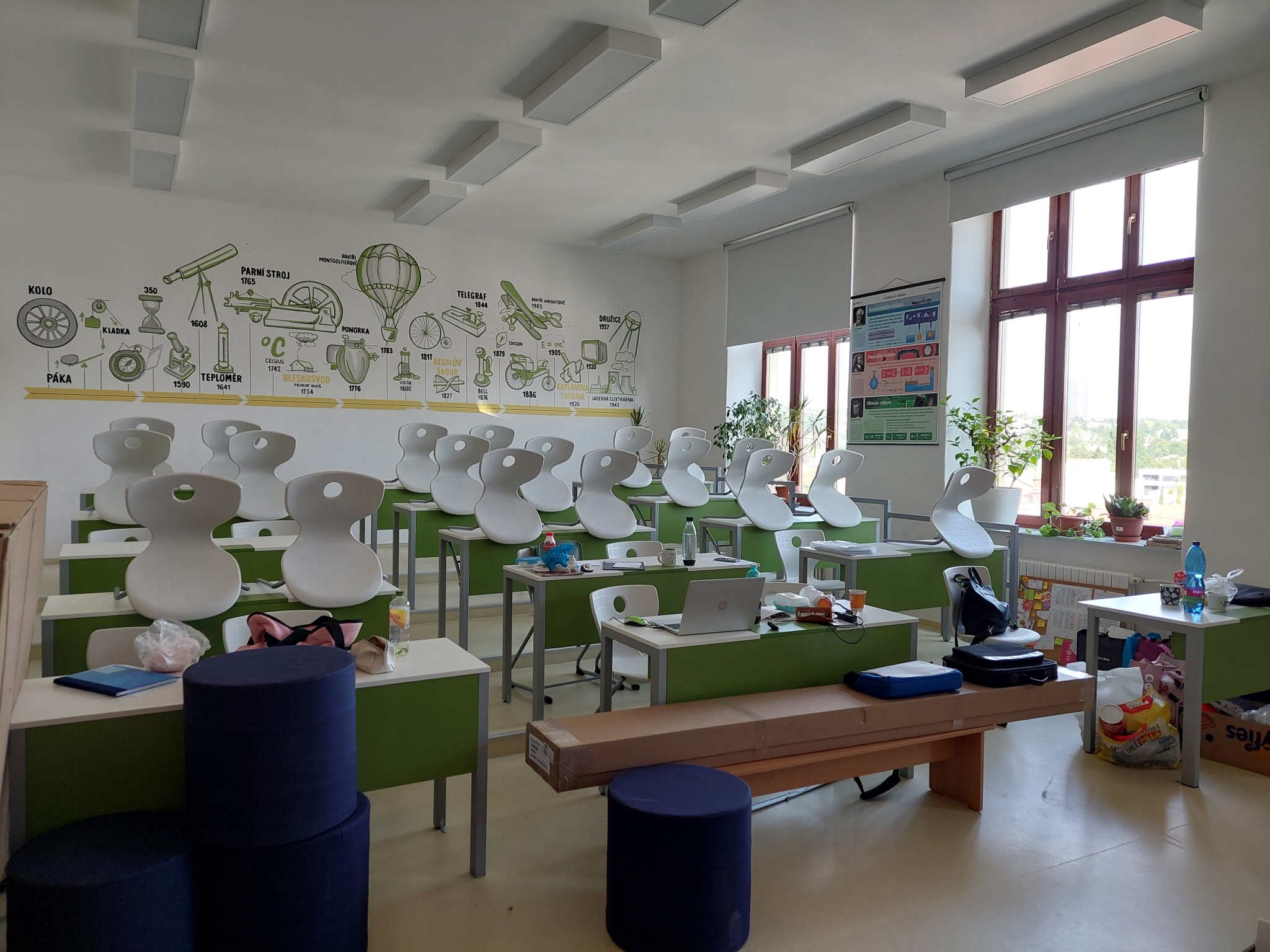Eleven primary schools in the Brno metropolitan area will be expanded with modern vocational classrooms. The new classrooms will improve the quality of children’s education, but teachers will also benefit from them.
It has been 250 years since Queen Maria Theresa introduced compulsory schooling. Since then, teaching behind school desks has naturally changed. And it is logical that education today is also responding to changes in the world, current trends and needs. While some fields are losing importance, others are developing and, if they are not important today, they certainly will be in the near future. Moreover, some subjects require education in specialised classrooms where students can put the theory they have learned into practice. Such rooms are being created for the teaching of science, engineering or crafts, to which foreign languages, computer science or robotics have also been added over time.
In many schools, however, vocational classrooms are completely missing or outdated. In some places, they have even disappeared after the increasing number of pupils forced them to become traditional classrooms. This problem is not only being solved in Brno, but also in neighbouring municipalities where young families are moving in. Schools are also facing pressure after the arrival of refugees fleeing the war in Ukraine.
Without vocational classrooms, however, education becomes less practical. Pupils have fewer options when looking for further study, reducing their chances of finding good jobs. Therefore, expanding not only vocational classrooms but also adjacent classrooms for teachers in primary schools is crucial for the Brno Metropolitan Area. In addition to the aforementioned impacts on education, the individual projects will improve cooperation between schools and make the individual municipalities in which the schools are located slightly more attractive to existing and new residents and their school-age children.
Of the 11 primary schools where the creation of vocational classrooms was supported by the Integrated Territorial Investments (ITI) tool, the Sirotkova Primary School in Brno’s Žabovřesky has already been completed. The new four-storey building has replaced the boiler room, which is now located in the basement. The remaining three floors are used to teach science, chemistry and robotics. The classrooms are equipped with microscopes, magnifying glasses, a terrarium with animals, interactive whiteboards or computers, where pupils program a robot, which they then build from a kit and test to see if it works.


The Gajdošova Primary School in the Židenice district of Brno is also expanding with new premises. In the first phase, five new vocational classrooms (geography, physics, science and two language classrooms) were built in the 2014-2020 period. In the next phase in the 2021-2027 programming period, two classrooms with computers, 3D printers and virtual reality or robotics tools will be built. This should be completed before the start of the 2025/26 school year.
Schools southwest of Brno are also responding to the lack of capacity. In Rosice, six classrooms had to be closed due to the increase in the number of pupils. The town has responded to this problem by revitalising the former vocational school in Na Vyhlídce Street, where five classrooms for mathematics, polytechnics, informatics, foreign languages and human and natural cognition will soon open. Ivančice will have two computer classes, one for science and one for foreign languages. In addition, teachers can look forward to three vocational cabinets. The primary school in Ostopovice will no longer have one, but four more vocational classrooms dedicated to science, polytechnic education, foreign languages and work with digital technologies. And the primary school in Zastávka will expand by six vocational classrooms for teaching computer science and English language, a computer science cabinet and a server room.
The situation is similar in other municipalities. The Jungmannova Primary School in Kuřim decided to build a two-storey extension with eight classrooms. In Sokolnice they have only a computer room, but this will soon be supplemented by rooms for teaching foreign languages, mathematics and science. The over 130-year-old school building in Pohořelice will be expanded by an extension with six vocational classrooms – mainly for first-grade pupils – and two cabinets. And in Pozořice, five new classrooms (computer science, science and foreign languages) and two cabinets will be added.
The budgets of individual projects range in the tens of millions of crowns. Subsidies from the Integrated Territorial Investments tool usually cover at least half of them. The total amount of ITI support is approximately CZK 360 million.
In the previous period 2014-2020, we supported the construction of vocational classrooms in 34 primary schools worth CZK 280 million. These include, for example, cyber security classrooms at the Junior Centre of Excellence at the Secondary School of Informatics, Postal Administration and Finance in Brno.
Register your e-mail address to receive regular updates from the Brno Metropolitan Area.